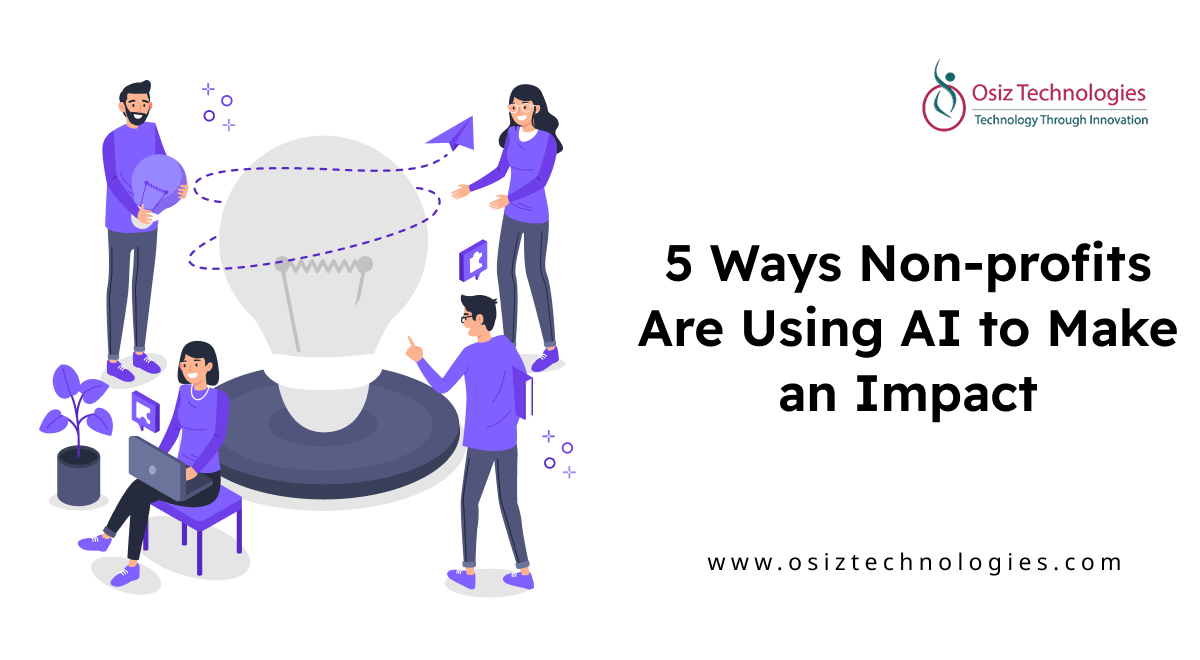AI for Non-Profits: AI Development is Transforming Social Impact
AI can help nonprofits do better work, even when money is tight. It helps with things like raising funds, managing volunteers, and checking if programs work well. By using data, nonprofits can make better choices. Working with an AI company can help them use these tools and make the most of their work.
AI’s Role in Revolutionizing Non-Profit Work
AI can really change things for nonprofits. Even with tight budgets, they can get better results and help more folks. AI can take over some of the work, look at data, and guess what's coming. This means nonprofits spend less time pushing paper and focus on their mission. It is a good idea to look into how AI can support these groups.
Understanding AI: What It Means for Non-Profits
AI is about systems that learn, reason, and decide, usually quicker and more correct than we can. For non-profits, this could mean smarter ways to raise money, better use of resources, and more personal contact with those who support you. Beyond the tech, AI is about using data to make choices that grow your impact. Knowing this shows why using AI is now a must for today's non-profits.
Why AI Adoption is Critical for Modern Non-Profits
Non-profits today face increased difficulties, like limited funds, rising costs, and pressure to deliver. Managing funds and creating impact is tough with older methods. AI can assist by helping with insights, automating tasks, and understanding donor behavior. This supports better choices, better operations, and focus on the mission.
AI gives non-profits an advantage in fundraising, volunteer efforts, and programs. AI can predict donor trends, and automation lessens admin duties, letting staff focus on what’s important. Seeing how helpful AI is makes it important to note how these groups use it to be efficient, engage people, and improve their communities.
5 Key Ways Non-Profits Are Leveraging AI for Impact
Predictive Fundraising
AI looks at donor history to predict donation timing and methods, letting charities plan focused campaigns and spend funds carefully. Trend predictions result in successful fundraising and save valuable time. Accurate forecasts are vital for campaign success and supporting.
Enhanced Donor Engagement
AI chatbots offer donors fast, personal responses. Supporters get info and resources that deepen their ties to the charity. Better conversations build trust and encourage loyalty. Consistent updates motivate repeat donations and long-term support.
Program Optimization
AI reviews program stats to measure impact. Charities spot top-performing programs and adjust plans as necessary. Program improvements confirm funds are well spent. This focus makes every dollar count, growing the charity's reach.
Data-Driven Decision Making
Machine learning extracts insights from data, showing trends and opportunities. Charities use these insights to make smart choices, set goals, and measure progress. Data-supported decisions are more precise.
Volunteer Management
AI matches volunteers to positions based on skills and availability, simplifying scheduling and increasing participation. Charities boost volunteer satisfaction by aligning people with suitable roles. Effective volunteer teams raise and improve morale.
AI in Action Across Non-Profits
Non-profits are using AI more and more to solve common problems and do more good. AI tech helps groups work in smarter, better ways, from guessing which fundraising drives will do well to handling volunteers. Groups can spot patterns, guess how donors will act, and put funds where they're really needed by using data.
AI is changing how non-profits talk to donors. Chatbots, custom messages, and auto systems let groups talk to fans right away and in ways that mean something. This makes bonds stronger and keeps people giving and loyal for a long time, which is key to keeping programs going.
AI helps judge programs and make choices on top of helping with funds and keeping people happy. Machine learning can look at big sets of data to see how well programs are doing, make things run better, and guide planning. Non-profits can do the most good and cut down on
Greenpeace: Smarter Fundraising with AI
Greenpeace Australia used Dataro's AI to analyze donor data and identify those most likely to respond to mail appeals. This targeted approach increased ROI some groups reached 12 while others were below 1 and retained 64 donors, saving about $23,040.
WattTime: Watching Emissions with Satellites
WattTime, working with Climate TRACE, uses AI to check satellite images and track greenhouse gas emissions from big polluters. Getting and studying data in real time helps them give useful advice and warnings, which helps fight climate change.
Wadhwani AI: Better Farming Methods
Wadhwani AI in Mumbai makes AI tools to tackle social issues in India. Partnering with Google.org, they built tech to cut cotton crop losses by better managing pests. Plus, they made AI tools to predict COVID-19 patterns, which helps with planning and action.
These real-world cases show how nonprofits use AI to run things better, connect with supporters, and handle big world problems. By using AI, these groups get better results and make a bigger difference.
Conclusion
AI is here now and can really change how nonprofits work and make a difference. If nonprofits get what AI can do and use it smart, they can improve things like raising money, handling volunteers, checking programs, and making choices based on data. Working with an AI development company that knows its stuff can help nonprofits set up the tech they need and get the right fit for what they do. As AI keeps changing, nonprofits that start using it now will not just get better at what they do, but also be the ones leading the charge in making real, long-term change in their communities.
Listen To The Article










